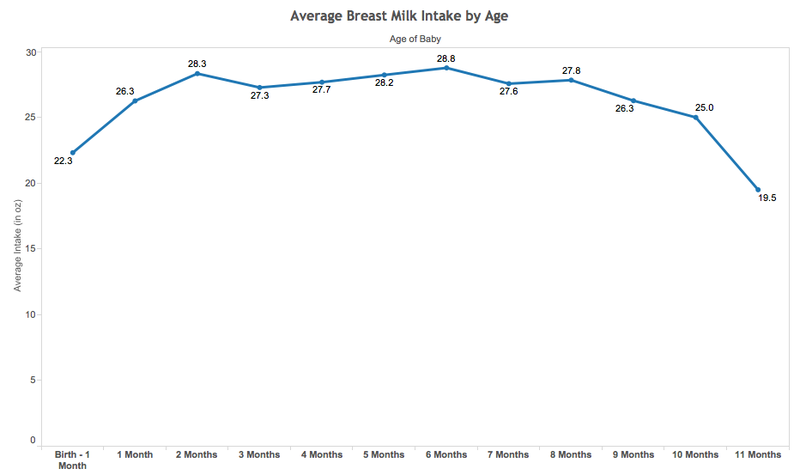The first year of your baby's life is the most crucial in terms of development and growth. For this reason, it is important to ensure that you are making the best and healthiest food choices during this year, which is why many women choose to breastfeed. First-time mothers who are breastfeeding are often concerned about how much breast milk they should be giving their new baby. You may be wonder how much breast milk at 5 months is substantial enough to promote healthy growth. In this article, we'll answer this question and more.

How Much Breastmilk at 5 Months for My Baby?
During the first month, your baby may consume anywhere between 19 to 30 ounces a day. On average most one-month-old consume around 25 ounces of milk. This tends to be consistent up until your baby is around 6 months. Know the fact that the weight and age of your child has little to do with how much they will consume each day from 1st month to 6th month. However, when your child experiences a growth spurt, which usually occurs during the third, fourth, and sixth month, they will increase their consumption of milk for about three days.
After six months?
Babies tend to begin eating solid foods around six months, so their consumption of milk will begin to decrease. This
What other mothers have said about it?
My little one is five months old and consumes about 30 ounces of breast milk a day. He usually does 4 to 6 ounces at a time about 6 times a day. We also have some solids typically green beans in the afternoon and sweet potato in the evening.
-Kristen, 26
My daughter is almost 5 months and eats about every 2-3 hours. She'll drink between 3 to 4 ounces each time, but we haven't started her on solids yet.
-Jennifer, 29.
I'm not sure how much breast milk at 5 months is normal. My little one would drink up to 6 ounces at daycare but it is easy for exclusively breastfed babies to overeat when given a bottle. I think if they seem satisfied with the amount you give them, then it's probably enough.
-Samantha, 27.
When my son was five months, he would drink about five ounces every two and a half hours. Once we started him on solid foods, he was able to go longer between bottles.
-Wendy, 31.
For weeks I was giving my son 6 ounces each feeding and it was hard to produce enough milk to keep this up. I started feeding him less, about 4 ounces, and he was still satisfied. Most babies will continue to consume whatever you give them, so they tend to overeat, but cutting back didn't make a difference to him. I ask my lactation consultant if this was OK and she assured me that I was most likely overfeeding him and the milk I was producing was enough to meet his needs.
-Monica, 26.
How to Know My Baby Has Taken Adequate Milk
Evaluate feeding
You want to pay particular attention to your baby when they are sucking. You'll be able to notice when the baby swallows, how often, and whether the more they swallow, the milk ejection reflex will increase. If you see some of the milk leak from the side of their mouth while feeding, it is a good indication they are getting plenty to eat.
Weight gain
Most babies should gain about a pound a month after birth. While the first few days or even weeks they may lose a little weight, they should come back to their birth weight fairly quickly. At five months you should expect your baby to be gaining 4 to 5 ounces a week.
Wet Diapers
Babies who are getting enough milk will tend to have 6 to 8 wet diapers a day with about 4 or 6 tablespoons of water in it. The color of the urine can be the best way to determine whether they are fed well. Lighter, pale colored urine indicates sufficient hydration where darker urine may indicate they are not getting enough breast milk. You will judge how much breast milk at 5 months is enough based on this.
Type and frequency of bowel movement
It is typical for most breastfed babies to have one bowel movement a day and some may only have a

View All Comments /Add Comment